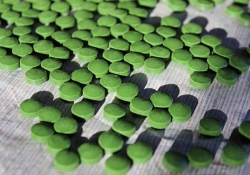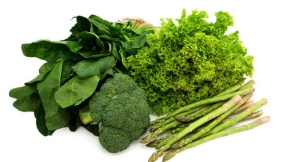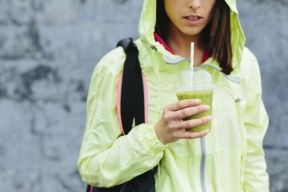
From chlorophyll pills to chlorophyll energy bars, the green pigment has been showing up in all sorts of products lately. You may remember from high school biology that chlorophyll is essential for photosynthesis, the process plants use to convert sunlight into energy. So why is it suddenly appearing in our foods? Is it really a super-nutrient worth seeking out—or just a passing fad? Here are a few things to know about the chlorophyll craze.
Chlorophyll is touted for a number of perks
Proponents say it detoxifies the body, promotes healing, boosts metabolism, fights bad breath, herpes, and cancer—and the list goes on. While the evidence behind these claims is largely anecdotal, there is some research on the benefits of chlorophyll. For example, one 2014 study looked at 38 overweight women who were following a weight-loss plan. The researchers found that over the course of 12 weeks, those who took a chlorophyll supplement once a day lost three additional pounds, on average, compared to those taking a placebo. The women in the chlorophyll group also experienced a greater decrease in LDL (or “bad”) cholesterol, and a reduction in sweet cravings. Other research has suggested that chlorophyll may have antioxidant properties.

There are some unknowns about chlorophyll
Since chlorophyll hasn’t been studied extensively, there’s no established optimal dosage, or a recommended way to consume it. Some of the research has been conducted with compounds derived from chlorophyll, rather than the pigment in its whole form—which means the same results may or may not occur if you have chlorophyll in its natural form.
Supplements may cause side effects
While chlorophyll supplements are considered fairly safe, there are a few interactions you should be aware of. For example, they may increase your sensitivity to sunlight. So you should probably skip them if you’re taking any medications that have the same effect (such as certain antidepressants, antibiotics, antihistamines, blood pressure, and cholesterol meds). There have also been some reports of nausea, digestive problems, and allergic reactions.

How you eat your greens makes a difference
Cooking chlorophyll-rich foods, especially for longer lengths of time, seems to lower their chlorophyll levels. Storing them in the freezer for several months can have a similar effect. So to best preserve the chlorophyll content of your greens, eat them raw or use short, light cooking methods, like steaming or low-heat sautéing. If you do decide to try a new chlorophyll product, be sure to read the ingredient list, and try to steer clear of artificial additives, and potentially risky herbs or stimulants. But most importantly, keep on eating (and drinking) your greens.








